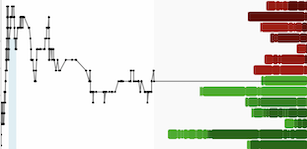Vancouver, British Columbia--(Newsfile Corp. - July 2, 2025) - FIRST ANDES SILVER LTD. (TSXV: FAS) (OTC Pink: MSLVF) (FSE: 9TZ0) (the "Company" or "First Andes") today announced, at the request of the Canadian Investment Regulatory Organization ("CIRO"), clarification to its news release dated July 2, 2025 (the "Original News Release") announcing field logging and interpretation results from the first diamond drill hole completed to target depth, SG017, as part of its ongoing 2,000-meter ("m") drill program at the Company's 100%-owned Santas Gloria Project ("Santas Gloria" or the "Project"), located approximately 55 kilometres east of Lima, Peru. This news release restates the disclosure contained in the Original News Release but removes any visual percentage estimates from core logging of mineralization contained therein.
Key Point Summary
- Drill hole SG017 at the San Jorge Vein ("San Jorge") intercepted a broad zone of sulphide-mineralized hydrothermal breccia from 136.60 to 194.20 m (57.60 m drilled width), characterized by strong silicification, argillic alteration and local sericitic alteration.
- Sulphide mineralization is present throughout the interval, with pyrite accompanied by local galena, sphalerite, barite and tetrahedrite.
- Sulphidic mineralization intensifies from 162.00 m, with occurrences of galena and sphalerite, along with barite and tetrahedrite crystals associated with quartz veins.
- The most intense brecciation occurs from 147.00 to 179.80 m, where the breccia features a strongly argillic altered matrix, silicified clasts, and mineralized veins with pyrite, galena, and sphalerite.
- A semi-massive interval of galena mineralization up to approximately 15 centimeters ("cm") in width was intercepted at 179.90 m which included pyrite and barite, as well as locally euhedral sphalerite crystals.
- Field observations and logging from SG017 confirm the presence of a robust, polymetallic-mineralized intermediate sulphidation hydrothermal system at depth, which remains open in all directions.
- The program's first hole, SG016, did not reach target depth after intercepting a void at 77.00 m, with alteration and mineralization commencing at 74.70 m, suggesting the onset of the epithermal zone - four samples totalling 2.60 m were submitted for assay. The void was likely the result of small scale artisanal miners stoping a near-surface mineralized vein.
- A total of 50 HQ-diameter core samples (half-core) totalling 43.00 m were collected and submitted from drill hole SG017 to Alfred H. Knight Group ("AHK Group") laboratory in Lima, Peru for assay, with initial results expected in 3 to 4 weeks.
"The intersection of a broad, sulphide-rich hydrothermal breccia in SG017 marks a significant breakthrough in the geological model at Santas Gloria," stated Colin Smith, CEO and Director of First Andes Silver. "The intensity of hydrothermal alteration, the presence of semi-massive galena and sphalerite, and the occurrence of pervasive polymetallic sulphide mineralization all suggest that vectoring into the core of a well-preserved, fertile sulphide system. With a vertical intercept depth of 125 and 170 meters, this drill test represents the deepest recorded intersection of epithermal mineralization in the Project's history. These results further underscore the scale and continuity of the San Jorge system, and we look forward to receiving assay results to evaluate the grade profile of this promising, open-ended mineralized zone."
Drill Hole SG017
Drill hole SG017, completed at the San Jorge Vein target within the Santas Gloria Project, intersected a substantial zone of sulphide-bearing hydrothermal breccia between 136.60 and 194.20 m downhole. This mineralized interval is characterized by intense hydrothermal alteration, including pervasive silicification and argillic overprinting, with localized zones of sericitic alteration, indicative of a high-temperature fluid regime and fully-intact intermediate sulphidation epithermal system.
Sulphide mineralization is present throughout the breccia, with pyrite as the dominant phase. Accompanying the pyrite are variable but notable occurrences of galena, sphalerite, barite, and tetrahedrite. From approximately 162.00 metres, the intensity of sulphidic mineral increases, with galena and sphalerite alongside barite and tetrahedrite crystals commonly observed within quartz veinlets.
The most texturally intense brecciation spans a core interval from 147.00 to 179.80 m, marked by a strongly argillic matrix, angular clasts exhibiting silica replacement, and a network of mineralized veinlets hosting pyrite, galena, and sphalerite. At 179.90 m, the hole intercepted a semi-massive interval with galena up to 15 centimetres wide, featuring pyrite and barite, along with locally euhedral crystals of sphalerite - a visually impressive and geologically significant zone.
Geological logging and field interpretation confirm that SG017 has intersected a robust, multiphase polymetallic hydrothermal system at depth which remains open in all directions, highlighting a strong potential for further expansion in subsequent drilling.

Figure 1: Plan map of ongoing 2025 drill program at San Jorge.
To view an enhanced version of this graphic, please visit:
https://images.newsfilecorp.com/files/10525/257603_3d0ce3d584847941_002full.jpg

Figure 2: Cross section of SG017.
To view an enhanced version of this graphic, please visit:
https://images.newsfilecorp.com/files/10525/257603_3d0ce3d584847941_003full.jpg
Table 1: SG017 zone description and core photographs (136.60 to 194.20 m).
| Depth (m) | Core Photo | Description |
| Box # 51 From 136.60 To 139.20 |  To view an enhanced version of this graphic, please visit: https://images.newsfilecorp.com/files/10525/257603_3d0ce3d584847941_004full.jpg | -137.40 m: sericitic alteration in the rock, with pyrite ("Py") |
| Box # 52 From 139.10 To 141.60 |  To view an enhanced version of this graphic, please visit: https://images.newsfilecorp.com/files/10525/257603_3d0ce3d584847941_005full.jpg | -139.70 m: Py identified with an increase silicification -149.70 m: oxidization and silicification increases |
| Box # 53 From 141.60 To 144..30 |  To view an enhanced version of this graphic, please visit: https://images.newsfilecorp.com/files/10525/257603_3d0ce3d584847941_006full.jpg | -142.90 m: increase of Py mineralization |
| Box # 54 From 144.30 To 147.00 |  To view an enhanced version of this graphic, please visit: https://images.newsfilecorp.com/files/10525/257603_3d0ce3d584847941_007full.jpg | -146.20 m: oxidization increases again, Py mineralization remains |
| Box # 55 From 147.00 To 149.70 |  To view an enhanced version of this graphic, please visit: https://images.newsfilecorp.com/files/10525/257603_3d0ce3d584847941_008full.jpg | -147.60 m: brecciation with argillic and silicic alteration -148.70 m: brecciation ends with Py mineralization |
| Box # 56 From 149.70 To 152.45 |  To view an enhanced version of this graphic, please visit: https://images.newsfilecorp.com/files/10525/257603_3d0ce3d584847941_009full.jpg | -150.35 m: fractures with sericite and sphalerite ("Sph") |
| Box # 57 From 152.45 To 155.20 |  To view an enhanced version of this graphic, please visit: https://images.newsfilecorp.com/files/10525/257603_3d0ce3d584847941_010full.jpg | -153.60 m: oxidized breccia, 50° core axis with argilized matrix and silicified clasts (Py in the clasts) -154.70 m: vein filed with sulphides, Py and quartz ("Qtz") |
| Box # 58 From 155.20 To 158.00 |  To view an enhanced version of this graphic, please visit: https://images.newsfilecorp.com/files/10525/257603_3d0ce3d584847941_011full.jpg | The matrix is argilized and the clasts silicified. Py in the clasts. |
| Box # 59 From 158.00 To 160.80 |  To view an enhanced version of this graphic, please visit: https://images.newsfilecorp.com/files/10525/257603_3d0ce3d584847941_012full.jpg | The matrix is argilized and the clasts silicified. Py in the clasts. |
| Box # 60 From 160.80 To 163.40 |  To view an enhanced version of this graphic, please visit: https://images.newsfilecorp.com/files/10525/257603_3d0ce3d584847941_013full.jpg | -162.15 m: The breccia ends, dacite light gray, silicificated, still with Py -162.50 m: Py continues to be present -163.25 m: oxidized zone, medium argillic alteration |
| Box # 61 From 163.40 To 166.30 |  To view an enhanced version of this graphic, please visit: https://images.newsfilecorp.com/files/10525/257603_3d0ce3d584847941_014full.jpg | -163.68 m: silicified rock and gray color again, Py continues to be present -166.00 m: breccia texture with Qtz veins |
| Box # 62 From 166.30 To 169.10 |  To view an enhanced version of this graphic, please visit: https://images.newsfilecorp.com/files/10525/257603_3d0ce3d584847941_015full.jpg | -167.10 m: Py, galena ("Gal"), Sph -168.05 m: Py, Sph with argillic alteration |
| Box # 63 From 169.10 To 171.75 |  To view an enhanced version of this graphic, please visit: https://images.newsfilecorp.com/files/10525/257603_3d0ce3d584847941_016full.jpg | Breccia starts with Qtz vein. Py, Sph with argillic alteration |
| Box # 64 From 171.75 To 174.45 |  To view an enhanced version of this graphic, please visit: https://images.newsfilecorp.com/files/10525/257603_3d0ce3d584847941_017full.jpg | -173.80 m: Gal disseminated in the Qtz vein, barite and tetrahedrite crystals present |
| Box # 65 From 174.45 To 176.95 |  To view an enhanced version of this graphic, please visit: https://images.newsfilecorp.com/files/10525/257603_3d0ce3d584847941_018full.jpg | -175.10 m: argillic alteration with Py, Gal and Sph -176.86 m: vein filled with sulphides, Py, Gal, Sph |
| Box # 66 From 176.95 To 179.50 |  To view an enhanced version of this graphic, please visit: https://images.newsfilecorp.com/files/10525/257603_3d0ce3d584847941_019full.jpg | -178.50 m: Py in the matrix, Sph -179.20 m: Qtz vein forming cavities with Py, Gal and barite |
| Box # 67 From 179.50 To 182.20 |  To view an enhanced version of this graphic, please visit: https://images.newsfilecorp.com/files/10525/257603_3d0ce3d584847941_020full.jpg | -179.90 m: vein with Gal, Sph crystal, Py and barite. 2-3 cm of thickness and 15 cm of length -180.20 m: The breccia ends at 30° core axes. Start footwall rock with Py |
| Box # 72 From 192.60 To 194.20 |  To view an enhanced version of this graphic, please visit: https://images.newsfilecorp.com/files/10525/257603_3d0ce3d584847941_021full.jpg | -193.60 m: Qtz vein with sulphides and Py and gal traces, entering footwall sequence |
Some core intervals were strongly oxidized and represents a supergene effect, whereby surficial groundwaters percolate down structures, resulting in oxidation of sulphides. Intermediate sulphidation epithermal deposits are mined throughout central Peru, and have demonstrated vertical extents in excess of 600 metres. Deeper drilling at Santas Glorias should encounter sulphide only mineralization.
Quality Assurance / Quality Control ("QA/QC")
The Company follows industry-recognized standards of Best Practice and QA/QC. HQ-diameter core samples are sawed into equal halves, and selected ½ core samples are submitted to AHK Group in in Lima, Peru, a market-leading provider of inspection and analysis services which maintains rigorous quality standards through compliance with industry standards and regulations, including ISO/IEC 17025 and ISO 9001. Core samples are sealed in plastic bags using single use tie-locks, thereby ensuring chain of custody, for fire assay and ICP analysis. To date, all batches have passed QA/QC within acceptable tolerance limits. All diamond holes were drilled in PQ-NQ diameter. Core recovery across all veins exceeded 90%.
Qualified Person
Dr. Christopher Wilson, Ph.D., FAusIMM (CP), FSEG, FGS, a Qualified Person under National Instrument 43-101, has reviewed and approved the technical information contained in this news release. Dr. Wilson is not independent and serves as Chief Geologist of First Andes Silver Ltd. and owns securities of the Company.
About First Andes Silver Ltd.
First Andes Silver Ltd. is a British Columbia company that holds a 100% interest in the high-grade Santas Gloria silver property, located in a major mining district 100 km east of Lima, Peru. Santas Gloria has excellent established road access, and is situated within a well-known intermediate sulphidation epithermal belt, and hosts over 12 km of multiphase veins mapped at surface which had never been historically drilled or explored by modern techniques before 2024. First Andes' maiden diamond drill program last year reported high-grade silver grades on all drilled vein systems confirming silver endowment and warranting high priority follow-up drilling in 2025.
For more information please contact:
Colin Smith, CEO & Director
Phone: 604 806-0626 (ext. 108)
E-mail: info@firstandes.com
Forward-Looking Statements
Information set forth in this news release contains forward-looking statements that are based on assumptions as of the date of this news release. These statements reflect management's current estimates, beliefs, intentions and expectations. They are not guarantees of future performance. The Company cautions that all forward-looking statements are inherently uncertain and that actual performance may be affected by a number of material factors, many of which are beyond the Company's control. Such factors include, among other things: risks and uncertainties relating to Company's limited operating history, ability to obtain sufficient financing to carry out its exploration programs and the need to comply with environmental and governmental regulations. Accordingly, actual and future events, conditions and results may differ materially from the estimates, beliefs, intentions and expectations expressed or implied in the forward-looking information. Except as required under applicable securities legislation, the Company undertakes no obligation to publicly update or revise forward-looking information.
The forward-looking statements contained in this news release are made as of the date of this news release. Except as required by law, the Company disclaims any intention and assumes no obligation to update or revise any forward-looking statements, whether as a result of new information, future events or otherwise.
Neither the TSX Venture Exchange nor its Regulation Service Provider (as that term is defined in the policies of the TSX Venture Exchange) accepts responsibility for the adequacy or accuracy of this release.
To view the source version of this press release, please visit https://www.newsfilecorp.com/release/257603




